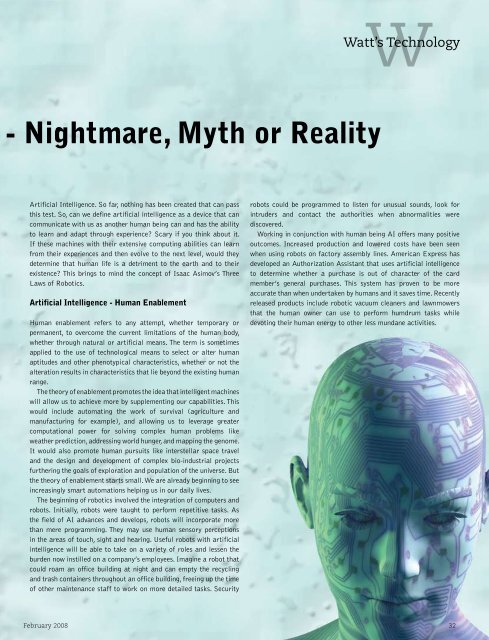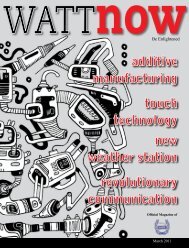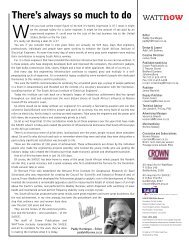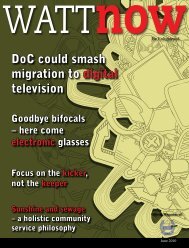South Africa ⢠R21.95 (incl. vat) - Watt Now Magazine
South Africa ⢠R21.95 (incl. vat) - Watt Now Magazine
South Africa ⢠R21.95 (incl. vat) - Watt Now Magazine
- No tags were found...
You also want an ePaper? Increase the reach of your titles
YUMPU automatically turns print PDFs into web optimized ePapers that Google loves.
W<strong>Watt</strong>’s Technology- Nightmare, Myth or RealityArtificial Intelligence. So far, nothing has been created that can passthis test. So, can we define artificial intelligence as a device that cancommunicate with us as another human being can and has the abilityto learn and adapt through experience? Scary if you think about it.If these machines with their extensive computing abilities can learnfrom their experiences and then evolve to the next level, would theydetermine that human life is a detriment to the earth and to theirexistence? This brings to mind the concept of Isaac Asimov’s ThreeLaws of Robotics.Artificial Intelligence - Human EnablementHuman enablement refers to any attempt, whether temporary orpermanent, to overcome the current limitations of the human body,whether through natural or artificial means. The term is sometimesapplied to the use of technological means to select or alter humanaptitudes and other phenotypical characteristics, whether or not thealteration results in characteristics that lie beyond the existing humanrange.The theory of enablement promotes the idea that intelligent machineswill allow us to achieve more by supplementing our capabilities. Thiswould <strong>incl</strong>ude automating the work of survival (agriculture andmanufacturing for example), and allowing us to leverage greatercomputational power for solving complex human problems likeweather prediction, addressing world hunger, and mapping the genome.It would also promote human pursuits like interstellar space traveland the design and development of complex bio-industrial projectsfurthering the goals of exploration and population of the universe. Butthe theory of enablement starts small. We are already beginning to seeincreasingly smart automations helping us in our daily lives.The beginning of robotics involved the integration of computers androbots. Initially, robots were taught to perform repetitive tasks. Asthe field of AI advances and develops, robots will incorporate morethan mere programming. They may use human sensory perceptionsin the areas of touch, sight and hearing. Useful robots with artificialintelligence will be able to take on a variety of roles and lessen theburden now instilled on a company’s employees. Imagine a robot thatcould roam an office building at night and can empty the recyclingand trash containers throughout an office building, freeing up the timeof other maintenance staff to work on more detailed tasks. Securityrobots could be programmed to listen for unusual sounds, look forintruders and contact the authorities when abnormalities werediscovered.Working in conjunction with human being AI offers many positiveoutcomes. Increased production and lowered costs have been seenwhen using robots on factory assembly lines. American Express hasdeveloped an Authorization Assistant that uses artificial intelligenceto determine whether a purchase is out of character of the cardmember’s general purchases. This system has proven to be moreaccurate than when undertaken by humans and it saves time. Recentlyreleased products <strong>incl</strong>ude robotic vacuum cleaners and lawnmowersthat the human owner can use to perform humdrum tasks whiledevoting their human energy to other less mundane activities.February 2008 32
















